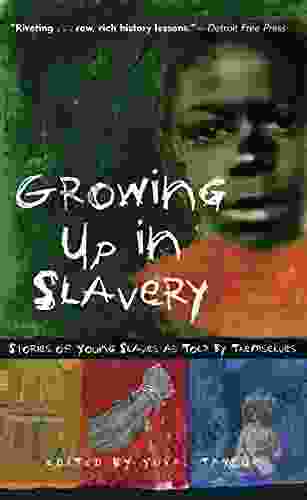Bioaugmentation Techniques and Applications in Remediation: A Comprehensive Guide

With the rising global concern over environmental pollution, innovative and effective remediation techniques are in high demand. Bioaugmentation, a microbe-based approach to soil and groundwater remediation, has emerged as a promising solution. This article delves into the transformative power of bioaugmentation, exploring its techniques, applications, and case studies to illuminate its transformative impact.
Understanding Bioaugmentation
Bioaugmentation involves introducing carefully selected microorganisms into contaminated environments to enhance or accelerate the natural degradation processes. These microbes possess specialized metabolic capabilities that enable them to break down and remove contaminants. By augmenting the microbial population, bioaugmentation stimulates the biodegradation of toxic substances, leading to effective and sustainable remediation.
4.2 out of 5
| Language | : | English |
| File size | : | 4794 KB |
| Text-to-Speech | : | Enabled |
| Screen Reader | : | Supported |
| Enhanced typesetting | : | Enabled |
| Print length | : | 174 pages |
Bioaugmentation Techniques
Bioaugmentation techniques vary depending on the specific contaminants and environmental conditions. Common approaches include:
- Direct Injection: Microbes are directly injected into the contaminated area through wells or injection points.
- Surface Application: Microbes are applied to the soil surface and allowed to infiltrate naturally.
- Biobarriers: Microbes are immobilized in a reactive zone to create a barrier that intercepts and degrades contaminants.
- Biostimulation: Indigenous microbes are stimulated by adding nutrients or electron acceptors to enhance their biodegradation capabilities.
Applications of Bioaugmentation
Bioaugmentation has proven effective in remediating a wide range of contaminants, including:
- Petroleum hydrocarbons: Diesel, gasoline, oil spills
- Chlorinated solvents: Trichloroethylene (TCE),tetrachloroethylene (PCE)
- Explosives: TNT, RDX, HMX
- Pesticides: DDT, chlordane
- Heavy metals: Lead, mercury, arsenic
Case Studies
Numerous case studies demonstrate the successful application of bioaugmentation in real-world scenarios:
- Hydrocarbon Spill Remediation: Bioaugmentation effectively removed diesel contaminants from a soil site in Texas, restoring the site to acceptable levels for residential use.
- Trichloroethylene Degradation: A bioaugmentation approach successfully reduced TCE concentrations in groundwater at a contaminated site in California, meeting regulatory standards.
- Explosive Remediation: Bioaugmentation was used to degrade TNT and RDX at an abandoned military site, enabling the safe redevelopment of the property.
Advantages of Bioaugmentation
Bioaugmentation offers several compelling advantages:
- Natural and Sustainable: Microbes are naturally occurring organisms that break down contaminants without leaving harmful residues.
- Cost-Effective: Compared to traditional excavation and disposal methods, bioaugmentation can be a more economical option.
- Versatile: Bioaugmentation can be applied to a wide range of contaminants and environmental conditions.
- Enhanced Biodegradation: Microbes with specialized metabolic capabilities can accelerate the biodegradation process.
Challenges and Considerations
While bioaugmentation offers significant potential, there are certain challenges and considerations:
- Microbial Selection: Selecting the appropriate microbes for a specific site and contaminant is crucial for success.
- Environmental Conditions: Soil pH, temperature, and nutrient availability can affect microbial activity.
- Monitoring: Regular monitoring is essential to track progress and ensure remediation goals are being met.
Bioaugmentation techniques and applications are revolutionizing soil and groundwater remediation. By harnessing the power of microorganisms, bioaugmentation provides a sustainable, cost-effective, and versatile solution for addressing environmental contamination. With continued research and advancements, bioaugmentation holds tremendous promise for the restoration of polluted environments and the protection of human health and ecological integrity.
4.2 out of 5
| Language | : | English |
| File size | : | 4794 KB |
| Text-to-Speech | : | Enabled |
| Screen Reader | : | Supported |
| Enhanced typesetting | : | Enabled |
| Print length | : | 174 pages |
Do you want to contribute by writing guest posts on this blog?
Please contact us and send us a resume of previous articles that you have written.
 Book
Book Novel
Novel Page
Page Chapter
Chapter Text
Text Story
Story Genre
Genre Reader
Reader Library
Library Paperback
Paperback E-book
E-book Magazine
Magazine Newspaper
Newspaper Paragraph
Paragraph Sentence
Sentence Bookmark
Bookmark Shelf
Shelf Glossary
Glossary Bibliography
Bibliography Foreword
Foreword Preface
Preface Synopsis
Synopsis Annotation
Annotation Footnote
Footnote Manuscript
Manuscript Scroll
Scroll Codex
Codex Tome
Tome Bestseller
Bestseller Classics
Classics Library card
Library card Narrative
Narrative Biography
Biography Autobiography
Autobiography Memoir
Memoir Reference
Reference Encyclopedia
Encyclopedia James Sie
James Sie J Van Mill
J Van Mill Marcel Berger
Marcel Berger Jake Steinfeld
Jake Steinfeld J Rodes
J Rodes Jamie Mcfarlane
Jamie Mcfarlane J Kardelle Stafford
J Kardelle Stafford Jack Grubbs
Jack Grubbs Geoffrey Cann
Geoffrey Cann William Mcginnis
William Mcginnis J R Mulholland
J R Mulholland Jacqueline Druga
Jacqueline Druga Jonathan Emmett
Jonathan Emmett Jon Axline
Jon Axline Victoria Wren
Victoria Wren J Que C Jones Pe
J Que C Jones Pe James Canton
James Canton Kelly Ann Butterbaugh
Kelly Ann Butterbaugh James A Willis
James A Willis Jane Heaton
Jane Heaton
Light bulbAdvertise smarter! Our strategic ad space ensures maximum exposure. Reserve your spot today!

 Chandler WardMathematically Coherent Quantum Gravity: A Paradigm Shift in the Foundations...
Chandler WardMathematically Coherent Quantum Gravity: A Paradigm Shift in the Foundations... Glenn HayesFollow ·7.6k
Glenn HayesFollow ·7.6k Stephen FosterFollow ·16.3k
Stephen FosterFollow ·16.3k Adrien BlairFollow ·6.6k
Adrien BlairFollow ·6.6k Raymond ParkerFollow ·8.7k
Raymond ParkerFollow ·8.7k Benjamin StoneFollow ·13.7k
Benjamin StoneFollow ·13.7k Philip BellFollow ·5.8k
Philip BellFollow ·5.8k Mario Vargas LlosaFollow ·4.3k
Mario Vargas LlosaFollow ·4.3k Chase MorrisFollow ·15.2k
Chase MorrisFollow ·15.2k

 William Golding
William GoldingWhere Dreams Descend: A Literary Gateway to a Kingdom of...
Prepare yourself for a...

 Joseph Conrad
Joseph ConradAmy Tan: Asian Americans of Achievement
Amy Tan is an...

 Fredrick Cox
Fredrick CoxAn Acorn Frog and Dog: An Unforgettable Adventure for...
Embark on an enchanting journey with "An...

 Robert Reed
Robert ReedAnna Sui: An Inspiring Asian American Role Model
Anna Sui is a...

 Jeremy Cook
Jeremy CookGrowing Up in Slavery: An Unforgettable and Harrowing...
A Window into a Forgotten...
4.2 out of 5
| Language | : | English |
| File size | : | 4794 KB |
| Text-to-Speech | : | Enabled |
| Screen Reader | : | Supported |
| Enhanced typesetting | : | Enabled |
| Print length | : | 174 pages |












